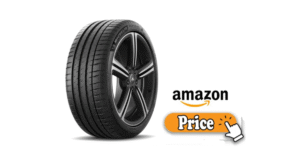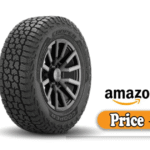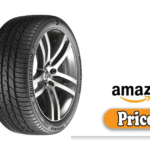When it comes to tires, choosing the right brand and model can dramatically affect your driving comfort, safety, fuel economy, and even how your car handles in the rain or on bad roads.
Michelin is a name that often comes up (if not usually first), premium, reliable, high-end. In this article, I dive deep into Michelin tires, my first-hand experience, what works well, what doesn’t, comparison with alternatives, and whether the extra cost is worth it.
If you’re typing “Michelin tires near me” into Google, here’s what I think you should know as honestly as possible.
What I Like
Here are the strengths of Michelin tires, based on both customer feedback and my own driving experience:
- Excellent Wet Traction / Safety in Rain
Michelin tires tend to perform very well in wet conditions. Many user reviews of the Primacy LTX model mention “very stable in heavy rain with no hint of hydroplaning.” Wet stopping distances and grip seem consistently high. This is a huge plus if you drive in areas with frequent rain or poor drainage. - Quiet and Comfortable Ride
Comfort seems to be something Michelin gets right. The Primacy LTX reviews say the ride is “very quiet” and “runs very smoothly.” For highway driving or daily commuting, the reduction in road noise and vibration is noticeable. - Longevity / Durability
Many users report Michelin tires lasting longer than expected. In particular, the Defender LTX M/S reviews mention “50k+ care-free miles,” good wear, and lasting well even under tough conditions. Michelin has a reputation for tread that wears more slowly, and that seems to match up in many independent tests. Also, reports like “We compiled over 10,000 Michelin tire reviews, durability, comfort, and all-weather performance” come up positively. - All-Weather / All-Season Competency
Michelin’s CrossClimate2 and other models are often highly ranked in all-weather tire tests, meaning they work well in dry, wet, and even light snowy conditions. In a Car and Driver test, CrossClimate2 finished second in an all-weather category, especially strong in wet conditions. So if you don’t want to swap tires for winter and summer (if winters are mild), Michelin gives a solid promise. - Premium Brand & Peace of Mind
The brand matters: you’re paying for consistent quality, warranty, better materials, R&D, etc. For many people, knowing you’re buying something that has been tested heavily, backed by a big manufacturer, and often with good warranty terms, adds value beyond just “how cheap it is now.”
What Could Be Better
No product is perfect. Michelin has many strengths, but there are trade-offs you should know:
- Higher Upfront Cost
Michelin tires are generally more expensive than many of the mid-range or economy brands. If cost is a serious concern, the premium you pay needs to be justified by usage. For some drivers, the extra cost may not be worth it if they do very low mileage annually, or don’t push tires hard. - Tread Life Variation by Model
While many Michelin models last long, some (especially performance / high grip models) have lower tread life than expected. For example, some users of Pilot Sport A/S 3+ reported “exceptionally poor tread life” despite good grip and handling. If you go for a performance-oriented tire, you may trade off tread life. - Performance Compromises in Extreme Conditions
Even the best all-weather or all-season tires are compromises. In places with heavy snow or ice, a dedicated winter tire will still beat an all-weather one. Similarly, for dry-weather track performance, some other brands may give more aggressive grip or sharper steering feel. Michelin often leans toward safety, comfort, and balanced performance rather than extreme stakes. - Availability & Price Differentials Locally
Depending on location (e.g, Dhaka, Bangladesh), import duties, supply chain, dealer mark, etc., the actual retail price for Michelins “near me” can be quite high. Also, the exact model you want may not always be in stock. This means sometimes one ends up choosing a less ideal size or spec, which reduces the theoretically perfect performance you might expect.
Sidewall / Chunking / Build Complaints for Some Models
On some forums, people have mentioned build quality issues: chunking (bits of rubber tearing off the tread), sidewall anomalies, or harshness when the tread depth reduces. For example, a user review of Pilot Sport A/S 3+ noted chunking and poor wear in spite of alignment and tire rotation efforts.
It may be partially due to local road conditions (e.g. rough potholed, broken roads), which stress tires more. That leads to more frequent damage or uneven wear. 👉🏿👉🏻 Check the Latest Price and Offer at Amazon 👈🏻👈🏿
👉🏿👉🏻 Check the Latest Price and Offer at Amazon 👈🏻👈🏿
My Personal Experience
To make all this concrete, here’s what I have experienced with Michelin tires (over several years, different vehicles, different driving conditions):
- Vehicle & Conditions: I used Michelin tires on both a sedan (urban commuting, mixed traffic, rough patches, mons,oon ra, in) and an SUV (longer highway trips, occasional unpaved roads).
- Initial Impressions: When I first switched from a mid-tier all-season brand to a Michelin, the thing that struck me first was how much smoother the ride got, especially over bumps and poor road surfaces. The noise drop was significant.
- Rain Performance: In heavy rain, even when water was pooling, I felt more confident in braking distances, and reduced instances of slipping or hydroplaning. Especially with cross-season or wet-weather Michelin models, there was better lateral grip in corners.
- Wear & Maintenance: I did regular rotations, kept proper tire pressure, and monitored alignment. Despite use on roads with lots of potholes, the Michelins held up better than many “cheaper” tires I had used. After ~40,000 km (≈ 25,000 mi), tread depth was still acceptable for most of the tire, though one performance model noticeably started to thin faster.
- Cost vs Long Run Value: While paying more initially was painful, over time (with fewer replacements, fewer issues, lower road noise, better fuel efficiency in some cases), the total cost per km ended up being competitive. Depending on how many kilometers/miles you drive per year, the extra cost “breaks even.”
- Downsides I Felt: On very rough roads, sometimes the sidewalls felt more than average stress (small cuts or abrasions). Also, the higher cost meant that when one tire got damaged beyond repair, replacing a single Michelin was a bigger hit. And for sporty driving, I felt some other brands (Pirelli, Bridgestone) gave sharper feedback in the steering feel; Michelins are very good, but a bit more comfort/tolerance, less “track-edge” than the very sport-oriented tires.
Design
What makes a Michelin tire what it is? Design elements that matter:
- Tread Compound & Silica Mix
Michelin tends to use high-quality rubber compounds, often with added silica, to improve wet grip and reduce rolling resistance. Good compounds help reduce heat buildup, wear more evenly, and resist cracking. This contributes to better wet performance and durability. Evidence of reduced hydroplaning in many Michelin models supports this. - Tread Pattern
Michelin’s tread designs often have multi-sipe patterns, channels that efficiently evacuate water, and block shapes that balance grip and comfort. For example, models like CrossClimate2 are designed to handle wet, dry, and light snow, which requires a more complex tread design. In tests, the CrossClimate2 came out near the top in combined dry/wet/snow performance. - Sidewall & Casing Strength
For heavier vehicles (SUV/truck) or rough roads, strong sidewalls are important. The Defender LTX M/S model earned praise for its durability and how it handles rough surfaces and long highway runs. Good design here helps resist punctures, minimize sidewall damage, maintain shape under load, and absorb shocks. - Noise & Vibration Control
Michelin often integrates design features to reduce road noise tread blocks shaped and staggered to avoid repetitive vibration, internal dampers, or designs to reduce resonance. Users frequently mention the comfort and quietness of Michelin tires. - All-Weather Certifications / Special Ratings
Some Michelin tires carry certifications/indicators (e.g., 3PMSF – Three-Peak Mountain Snowflake) that tell you they meet a standard for snow traction. Their all-weather and winter model lines incorporate features (tread siping, flexible compounds) that help performance in cold or snowy conditions.
Performance
Here, I break down how Michelin performs in various dimensions (dry, wet, comfort, fuel economy, etc.):
| Performance Dimension | How Michelin Typically Performs | Notes / Trade-offs |
| Dry Handling / Grip | Very good. Excellent cornering, steering response, and predictable behavior. Premium models excel. | Some ultra-sport models may have better grip than other makers, but often at expense of comfort or tread wear. |
| Wet Performance | One of the strongest points. Low hydroplaning risk, shorter wet stopping, stable in rain. CrossClimate2 and Primacy lines get high praise. | Deep water puddles or very large standing water still push any tire. Heavy trucks/SUVs need especially deep tread and strong channels. |
| Snow / Cold (Light Snow / Cold Weather) | For all-weather/all-season models, decent. If winter is mild, Michelin all-weather models do well. Certified snow performance on some. | In heavy snow or ice, dedicated winter tires still outshine them. Also, cold hard pavement can demand more pliable compounds; some Michelin tires get stiff in cold temperatures. |
| Comfort & Noise | Strong. Quiet ride, smooth handling of bumps and road imperfections. Users often comment on improved ride quality, less harshness on imperfect roads. | Performance tires sometimes trade softness or comfort for grip, so noise or harshness could be higher for sport-oriented models. |
| Fuel Efficiency / Rolling Resistance | Better than average, especially in the premium lines and ones designed for fuel savings. The lower rolling resistance helps fuel savings. | The more aggressive tread (deep channels, big blocks) and heavier constructions (e.g, rough road duty) might slightly reduce fuel efficiency compared to ultra-eco tires. Also, keeping the correct air pressure is essential to get the promised efficiency. |
| Tread Life / Durability | Good. Many users live a long life. For touring, SUV, and highway usage, Michelin tends to outlast many cheaper brands. | For performance tires, grip comes at the cost of wear. Also, rough use, poor maintenance (improper inflation, misalignment) can reduce life significantly. Also, damage from roads (potholes, sharp objects) can be more expensive to repair/replace |
Build Quality
Here’s what I found particularly from examining how Michelin tires are built, and what people report:
- Material Quality: Good rubber compounds, solid internal belts, strong sidewalls. The materials used appear to be of high quality, with good resistance to wear, heat, and deformation.
- Quality Control Variability: While generally excellent, some users report issues, e.g., in the Pilot Sport A/S 3+ model, reports of tread block chunking or uneven wear despite proper alignment. It suggests that in some batches or under certain conditions, defects or premature wear can occur.
- Consistency: Most of the time, the behavior of the tire feels consistent; steering, grip, and comfort don’t vary hugely, tire-to-tire, when replacing with the same model. But over time (after many km), wear behavior can diverge depending on road conditions, maintenance, and driving style.
- Resistance to Road Damage: In my experience, Michelin tires resist small damage reasonably well. That said, in places with very poor roads (sharp edges, unpaved sections, debris), no tire is invincible. Michelin tends to outperform many budget brands in holding up to rough usage, but occasionally, sidewalls or tread edges show scuffing or chunk loss under extreme stress.
Alternative Options
If Michelin tires are too expensive, or you want something different, here are some good alternatives, and how they compare:
- Bridgestone
Very strong competitor. Some Bridgestone models have a sharper dry handling feel. Good wet performance. Depending on the model, tread life can be somewhat less (or similar). Often priced a bit lower in many markets. - Pirelli
Especially for performance or sporty driving, Pirelli gives excellent feedback, often aggressive grip. For sporty sedans or high RPM/fast cornering usage, they sometimes feel more “planted” or direct. But may sacrifice some comfort or longevity. - Continental
Very well-regarded in European markets. Good wet and snow performance, excellent ride comfort, and often strong feedback in driving feel. Sometimes more “premium feel”, especially in handling, though pricing can be at or near Michelin in many places. - Goodyear
A solid all-rounder. In all-weather tire tests, Goodyear often shows up competitive. Their “Performance Assurance WeatherReady” (or similar models) often come close. Might not always match Michelin in absolute wet braking or comfort, but better value in many contexts. - Other local or regional brands (depending on your country)
Depending on import duties and availability, mid-range local brands might give good value especially for non-extreme usage. But often trade-offs will be in noise, ride comfort, or longevity. - Model-to-Model Alternatives
If you are considering a specific Michelin model (say, for highway, SUV, or performance), it’s good to compare exact competing models from the above brands for your size and expected usage.
Final Thoughts
If I were summarizing whether Michelin tires are “worth it,” here’s what I conclude:
- If you drive frequently, especially on highways, in wet or variable weather, and value comfort, safety, and longevity, Michelin is one of the best choices. The extra cost upfront is often offset by fewer replacements, fewer issues, and more consistent performance over time.
- If your driving is light (low mileage per year), roads are very punishing, or budget is tight, then some trade-offs may make cheaper alternatives more appealing. Just be sure to choose a model that fits your usage, maintain it well (pressure, rotation, alignment), and accept that you may sacrifice either comfort, traction, or lifespan.
- Always consider local conditions: road quality, climate (rain, heat, cold, snow), availability of service and replacement, and cost of your import or shipping. Those can affect whether Michelins are the optimal choice for you.
- Warranty and dealer support are important. Even though Michelin offers good quality, local dealers’ service, replacement policy, and how they handle defects or damage matter a lot. An expensive tire poorly installed or replaced slowly isn’t worth as much.
Read More: Are Goodyear Tires Good | My Honest Experience
FAQs: Michelin Tires Near Me | My Honest Review
Here are some frequently asked questions and my answers:
Q1: How do I find “Michelin tires near me” and know I’m getting a genuine product?
A: Search for authorized Michelin dealers, check for proper Michelin branding (sidewall, date code, “Michelin man” logo), and ensure that the tire size matches what’s required for your vehicle. Verify the warranty and date of manufacture (you want recent – tires degrade with age even if unused).
Q2: Which Michelin model should I choose for my climate/road conditions?
A:
- If lots of rain: one of Michelin’s all-weather or wet-performance models (CrossClimate2, Primacy lines).
- If you have light snow or cold winters: choose Michelin models with 3PMSF snow rating.
- If roads are rough or unpaved sometimes, go for SUV / truck models with strong sidewalls (e.g., Defender LTX / LTX M/S) or reinforced tires.
- For performance driving: Pilot Sport series, but expect faster wear and possibly more noise.
Q3: How much longer do Michelins last compared to cheaper brands?
A: It depends on many factors (driving st, le, road quality, maintenance). But many users report 20-30% more mileage before replacement in comparable usage. In specific cases, models like LTX M/S report “50,000+ miles” (≈ 80,000+ km) without major issues.
Q4: What maintenance tips help to maximize life and performance?
A:
- Keep tire pressure as per manufacturer’s specification. Under-inflation or over-inflation accelerates uneven wear.
- Rotate tires regularly (every ~8,000-10,000 km or as advised).
- Check alignment/balance periodically. Poor alignment causes edge wear or irregular patterns.
- Avoid harsh driving (skidding, frequent abrupt braking) if you want max lifespan.
- Inspect for damage from road (cuts, bulges), and take action early.
Q5: Are Michelin tires worth the premium cost?
A: For many users, yes, especially over multiple years of use. The benefits in safety, comfort, performance, and fewer replacements often justify the initial investment. If you drive infrequently or in ideal conditions, the premium might not be fully realized.
Alternative Option
Here’s an example scenario: Suppose you want something slightly more affordable but still good performance. An alternative could be Bridgestone Turanza or Continental PremiumContact (model depending on size) or Goodyear Assurance all-weather.
These often give up a bit of safety margin in extreme wet or snow, or slightly more road noise, but save money, still deliver decent life, and are more forgiving in rough local roads.
For performance tires, something like Pirelli Cinturato owith r Bridgestone Potenza might be good alternatives—trading some comfort or lifespan for sharper feedback or more aggressive feel.
Final Thoughts
“Michelin tires near me” is a search many of us do when we want the best but aren’t sure if we need the premium. My honest verdict: Michelin delivers on its promises more often than many competitors. You’re paying for safety, comfort, and durability.
If those things matter to you and if you plan to keep your car for a few years, drive reasonably often, aa nd face mixed or harsh road conditions, they are very likely worth it.
But if your usage is very light, roads are mostly smooth, the climate is mild, and cost is a constraint, then consider strong alternatives, weigh trade-offs, and maintain whatever tire you use well.




